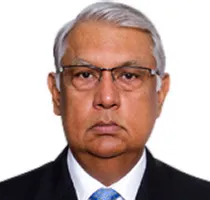-
CENTRES
Progammes & Centres
Location

Founded in 1985 at Dhaka, SAARC was conceived as an ambitious platform for regional cooperation in the Indian sub-continent. Arguably, the most important regional organization, SAARC, is currently moribund and marginalized. The aborted SAARC Summit in Islamabad last year, was a direct result of Pakistan’s unremitting commitment to state-sponsored terrorism, directed primarily against India but also against Afghanistan and, to some extent Bangladesh. The Pakistani deep state, rooted in the country’s Army, believes that its interest is best served by perpetuating hostility towards India and blocking all moves to normalize relations. Pakistan has therefore, directed its energies towards deepening its integration with China, her so-called all-weather ally, via the CPEC and blocking all intra SAARC connectivity projects and those between Central Asia and India.
Pakistan believes that this policy ensures abiding Chinese interest of using Pakistan as a proxy against India, in the perennial game of regional balancing of power. Such leveraging against India is also adopted by other countries. Though on hold currently, the USA has been coddling Pakistan with huge amounts of money and military hardware, since the heydays of the Cold War. Later events have led to Afghanistan becoming the main raison d’etre for continuing such assistance, despite Pakistan growing into the epi-centre of terrorism. Intermittent, holding back of American aid has not deterred Pakistan from eschewing state sponsorship of terrorism. This carrot and stick policy has failed to achieve its goals.
India’s land-based connectivity options are consequently blocked westward. India therefore, has had to make course corrections in its foreign policy to explore new options. Though not directly linked to SAARC, the Look East Policy
The opening up of India’s economy, following the economic reforms of 1991 provided the impetus for reworking India’s foreign policy. India adopted two parallel new policy tracks to meet its national challenges, both economic and political, marking the beginning of the roadmap for economic liberalization and the external policy path of the LEP, to help expand India’s trade and investment with the dynamic ASEAN region. These two choices have transformed India’s economy and foreign policy in the past 20 years. LEP was a logical outcome of domestic compulsions and a changed external environment.
The change of nomenclature from the LEP to the “Act East Policy”
The dormant status of SAARC and the changes underway in the regional and global landscape triggered India’s initiative to invite the BIMSTEC leadership to the BRICS Summit in Goa in October 2016. This move was a much-needed boost to this organization’s profile, launching BIMSTEC into a meaningful and potentially strategic role in sub-regional cooperation. BIMSTEC potential future as a bridge between SAARC and ASEAN is no longer sustainable. Its goals, therefore, are being redefined to add ballast to India’s “Act East Policy”.
Another logical outcome of the SAARC becoming crippled is the BBIN – the sub-regional grouping of Bangladesh, Bhutan, India and Nepal, all members of SAARC. While it is not breakaway group and is derived from various previous work on sub-regional cooperation, the BBIN can function as cohesive group, given the growing trade, economic and infrastructure connectivity that exist between these countries. The BBIN Motor Vehicles Agreement
The urgency of promoting regional and sub-regional cooperation via BIMSTEC and BBIN has to be seen in the context of China’s BRI/OBOR and the compelling strategic challenge posed by China’s muscular geo-economic and geo-political interventions in Asia, particularly in India’s neighbourhood. Asia is the new arena of cooperation, rivalry, contestations and also economic growth. Though maritime disputes in the South China Sea attract global attention, the Bay of Bengal has moved centre stage as the next strategic and economic arena in the Indo-Pacific region. BIMSTEC and ASEAN both have seminal roles, in re-integrating the Bay of Bengal as an economic hub and strategic space. The salience of BIMSTEC has, therefore, grown for India to secure its strategic space in the neighbourhood and the Bay of Bengal region.
The BIMSTEC countries host a population of around 1.5 billion, approximately 21% of global population, with cumulative GDP of US$ 2.5 trillion. The annual GDP growth rate has averaged around 6%. The 4th Summit is scheduled to be held in Nepal later this year. BIMSTEC has identified 14 priority sectors and has signed an FTA (2004) and a Convention on Cooperation in Combating International Terrorism, Transnational Organized Crime and Illicit Drug Trafficking (2009). The pace of implementation has been quite sluggish so far. While India is the lead country for four priority sectors, namely, transportation and communication, environment and disaster management, tourism, and counter-terrorism and trans-national crime, BIMSTEC has to move into areas of strategic cooperation.
The BIMSTEC agenda now includes a Mutual Legal Assistance Treaty
The Asia-Africa Growth Corridor
India’s EAM Sushma Swaraj has said that BIMSTEC was the “natural choice” for India to fulfil its foreign policy objectives in the neighbourhood towards the East. The Indian EAM also stressed that strategies to counter terrorism and violent extremism will move centre stage in BIMSTEC, given the centrality of peace and security for all round development.
This commentary originally appeared in Eastern Chronicle
The views expressed above belong to the author(s). ORF research and analyses now available on Telegram! Click here to access our curated content — blogs, longforms and interviews.

Pinak Chakravarty was a Visiting Fellow with ORF's Regional Studies Initiative where he oversees the West Asia Initiative Bangladesh and selected ASEAN-related issues. He joined ...
Read More +